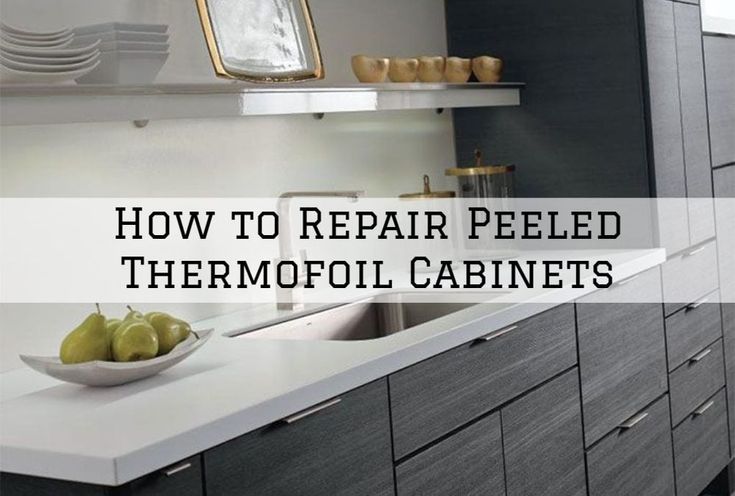Thermofoil cabinets are a popular choice for many homeowners due to their durability and easy-to-clean surfaces. However, over time, Thermofoil cabinets may require repairs due to wear and tear moisture damage, or other factors. In this article, we will discuss how to repair Thermofoil cabinets, including some common issues and their solutions.
Peeling or delamination
One of the most common problems with Thermofoil cabinets is peeling or delamination, which occurs when the Thermofoil layer separates from the substrate material. This can happen due to exposure to heat or moisture, or simply from normal wear and tear over time.
To fix peeling or delamination, you will need:
A putty knife or scraper
Sandpaper (120-grit)
Contact cement
A clean cloth
Step 1: Remove any loose or peeling thermofoil using a putty knife or scraper. Be gentle to avoid damaging the underlying substrate.
Step 2: Sand the surface of the substrate using 120-grit sandpaper to create a rough surface that will help the contact cement adhere better.
Step 3: Apply a thin layer of contact cement to both the substrate and the back of the thermofoil, using a clean cloth. Wait for the cement to become tacky, usually around 15-20 minutes.
Step 4: Carefully align the thermofoil with the substrate and press firmly to ensure a strong bond. Use a roller or a clean cloth to smooth out any air bubbles.
Scratches or chips
Another common issue with thermofoil cabinets is scratches or chips, which can occur from normal use or accidents. These can be unsightly and can even lead to further damage if left untreated.
To fix scratches or chips, you will need:
A touch-up kit or matching paint
A fine-tipped brush or toothpick
Sandpaper (220-grit)
Step 1: Clean the area around the scratch or chip with a mild detergent and water. Dry thoroughly.
Step 2: Sand the damaged area lightly with 220-grit sandpaper to smooth out any rough edges.
Step 3: Using a fine-tipped brush or toothpick, apply the touch-up paint or matching paint to the damaged area. Be careful to apply only a small amount and blend it in with the surrounding area.
Step 4: Let the paint dry completely according to the manufacturer’s instructions.
Loose or broken hinges
The hinges on thermofoil cabinets can become loose or broken over time, especially if the cabinets are heavily used. This can cause the doors to sag or not close properly.
To fix loose or broken hinges, you will need:
A screwdriver
Wood filler or epoxy putty (for broken hinges)
Clamps (for broken hinges)
Step 1: Remove the screws that hold the hinge in place using a screwdriver.
Step 2: If the hinge is loose, use wood filler or epoxy putty to fill in any gaps or cracks in the wood. Let it dry according to the manufacturer’s instructions.
Step 3: If the hinge is broken, use wood filler or epoxy putty to attach the two pieces of the hinge back together. Use clamps to hold the pieces in place while the filler or putty dries.
Step 4: Once the filler or putty is dry, reattach the hinge using the screws.
Warped or swollen cabinets
Thermofoil cabinets can also become warped or swollen if they are exposed to moisture or humidity over time. This can cause the doors to stick or not close properly.
To fix warped or swollen cabinets, you will need:
A dehumidifier or fan
Sandpaper (120-grit)
A putty knife or scraper

